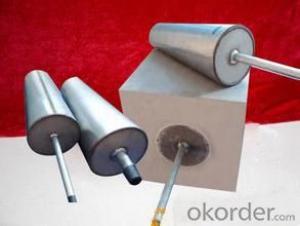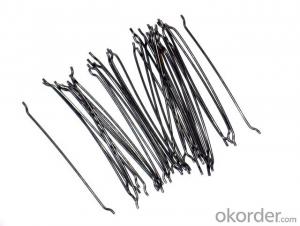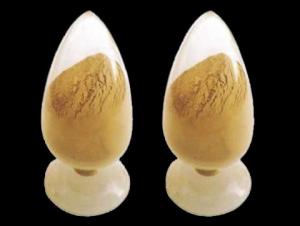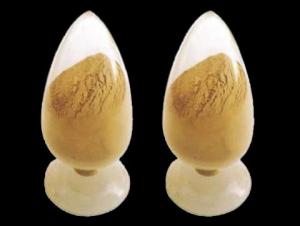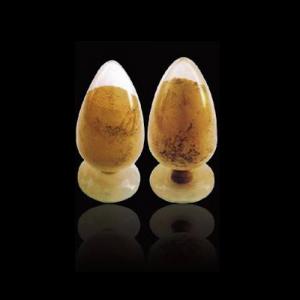Refractory Brick purging plug for Ladles
- Loading Port:
- Shanghai
- Payment Terms:
- TT OR LC
- Min Order Qty:
- 10 set
- Supply Capability:
- 50000 set/month
OKorder Service Pledge
OKorder Financial Service
You Might Also Like
High quality steel ladle purging plug for steel making
Company profile
We have many years manufacturing experience in producing all types of electric furnace refractories, ladle refractories, tundish refractories, metallurgy furnace burden refractory insulating products, industrial furnace refractories, etc,
purging plug Raw materials
Ladle permeable brick has been in the leading position in domestic and abroad over years. We have developed the series of corundum, chromium corundum, low silicon chromium corundum and corundum spinel one after another.
Customized purging plug
They can be designed and produced types of straight hole, directional slit, directional labyrinth, girth shape and interior and exterior integral split etc according to users’ request. Permeable flow rate of products can be designed upon customers’ request and can be adjusted in a wide range. The blowing opening rate is high.
purging plug Characters
Continuous casting Ladle Porous Block
High alumina and MgO content
High stability.
Thermal shock resisitance.
High life span
purging plug Physical and chemical indexes
Brand | TQZ-1 | TQZ-2 | |
Chemical composition/%,≥ | Al2O3+Cr2O3 | 92 | |
Al2O3+MgO | 92 | ||
Bulk density g/cm³ ≥ | 3 | 3 | |
Crushing strength /Mpa≥ | 1500°C×3h | 100 | 80 |
Modulus of rupture/Mpa≥ | 1500°C×3h | 20 | 15 |
Firing linear change % | 1500°C×3h | 0~+0.3 | 0~+0.4 |
Penetration gas flux (0.4Mpa)/m³ h-1 | 12~60 | 12~60 | |
Factory productivity
Based on 180,000 TON annual productivity and advanced production equipment, we have build deep cooperation relationship with Vietnam, Nigeria, Tailand, Saudi Arabia, Iran, Turkey, etc.
- Q:Can monolithic refractories be used for lining iron and steel ladles during casting and pouring?
- Yes, monolithic refractories can be used for lining iron and steel ladles during casting and pouring. Monolithic refractories are a type of refractory material that is composed of a single, homogeneous structure, as opposed to traditional refractory bricks which are made up of multiple pieces. Monolithic refractories are often preferred for lining ladles in iron and steel casting due to their numerous advantages. Firstly, they have excellent thermal shock resistance, allowing them to withstand the high temperatures experienced during casting and pouring processes. This is crucial as ladles are constantly exposed to extreme heat. Additionally, monolithic refractories offer superior erosion and corrosion resistance, ensuring that the lining can withstand the harsh conditions and chemical reactions that occur when molten metal comes into contact with the ladle. They also have good thermal insulation properties, reducing heat loss and increasing energy efficiency during the casting process. Furthermore, monolithic refractories are highly versatile and can be easily installed, repaired, or replaced. They can be formed and shaped to fit the specific requirements of ladles, providing a tight and secure lining. This flexibility also allows for quick maintenance and repair, minimizing downtime and optimizing productivity. In conclusion, monolithic refractories are an ideal choice for lining iron and steel ladles during casting and pouring. Their thermal shock resistance, erosion and corrosion resistance, thermal insulation properties, and ease of installation make them well-suited for this demanding application.
- Q:How do monolithic refractories improve the thermal efficiency of iron and steel furnaces?
- The thermal efficiency of iron and steel furnaces greatly benefits from the use of monolithic refractories. These refractories, which are solid and unified, are essential for lining the furnaces and protecting them from the extreme temperatures involved in the metal production process. One way in which monolithic refractories enhance thermal efficiency is by minimizing heat loss. Due to their low thermal conductivity, these materials do not conduct heat well. By lining the furnace with monolithic refractories, the heat produced inside the chamber is effectively contained, resulting in less heat being lost to the surroundings. This allows for a more efficient use of energy, as less heat goes to waste and more is utilized for the purpose of heating and melting the metal. Moreover, monolithic refractories also contribute to the overall efficiency of iron and steel furnaces by offering a high level of heat resistance. The extreme temperatures experienced inside these furnaces can easily damage traditional refractory materials. However, monolithic refractories are specifically designed to withstand these harsh conditions, maintaining their integrity and performance over long periods of time. This durability ensures that the lining remains intact, preventing any potential leakage of heat and allowing the furnace to operate at its maximum efficiency. Furthermore, the installation process of monolithic refractories is flexible. They can be easily shaped and molded to fit the intricate designs and contours of the furnace, resulting in a seamless and continuous lining. This eliminates any gaps or weak points that could allow heat to escape or cold air to enter, further enhancing the thermal efficiency of the furnace. In conclusion, monolithic refractories significantly improve the thermal efficiency of iron and steel furnaces by reducing heat loss, providing high heat resistance, and ensuring a tight and continuous lining. By optimizing heat utilization and minimizing energy wastage, these refractories play a crucial role in enhancing the productivity and sustainability of the iron and steel industry.
- Q:What are the key properties and characteristics of monolithic refractories?
- Monolithic refractories are a type of refractory material that is manufactured in a single piece or mass, unlike traditional refractory bricks or shapes. The key properties and characteristics of monolithic refractories include their high heat resistance, excellent thermal conductivity, and ability to withstand extreme temperatures and thermal shocks. They also have good chemical resistance, which makes them suitable for use in various industrial applications. Additionally, monolithic refractories offer ease of installation and repair due to their flexibility and ability to conform to different shapes and structures.
- Q:How do monolithic refractories withstand thermal cycling in the iron and steel industry?
- Monolithic refractories are designed to withstand thermal cycling in the iron and steel industry due to their unique composition and properties. These refractories are made from a single, continuous material, unlike traditional refractory bricks that are made by stacking individual bricks together. One of the main reasons monolithic refractories are able to withstand thermal cycling is their ability to expand and contract without cracking or damage. This is due to their high thermal shock resistance, which is a measure of their ability to withstand rapid temperature changes. Monolithic refractories are specially formulated to have low thermal conductivity, allowing them to resist the transfer of heat and minimize thermal gradients within the material. In addition, monolithic refractories have excellent thermal stability, which means they can maintain their structural integrity and mechanical strength even at high temperatures. This is crucial in the iron and steel industry, where temperatures can reach extreme levels. The refractories are able to withstand repeated heating and cooling cycles without undergoing significant structural changes or degradation. Furthermore, monolithic refractories have good corrosion resistance, which is important in an environment where they come into contact with molten metal and various chemical agents. Their composition and special additives help to protect the refractory material from chemical attack, preventing erosion and prolonging their lifespan. The manufacturing process of monolithic refractories allows for easy installation and repair, as they can be applied as a liquid or a semi-liquid mixture. This reduces the risk of joints or weak points that could lead to thermal stress or failure during thermal cycling. Overall, the combination of high thermal shock resistance, low thermal conductivity, excellent thermal stability, corrosion resistance, and easy installation makes monolithic refractories highly durable and capable of withstanding the severe thermal cycling conditions in the iron and steel industry.
- Q:How do monolithic refractories withstand the mechanical impacts in furnace door applications?
- Monolithic refractories are designed to withstand mechanical impacts in furnace door applications due to their unique properties and composition. These refractories are made from a single piece of material, which eliminates the need for joints or seams that are prone to cracking or failure under mechanical stress. One important characteristic of monolithic refractories is their high density, which provides them with excellent strength and resistance to mechanical impacts. Their dense structure makes them less susceptible to cracking or breaking when subjected to sudden or repeated impacts, such as when a furnace door is opened or closed. In addition to their density, monolithic refractories also possess high tensile strength and toughness. These properties allow them to absorb and distribute the energy from mechanical impacts, reducing the risk of damage or failure. This is particularly important in furnace door applications, where the refractories are constantly exposed to the stress of opening and closing the door. Furthermore, monolithic refractories often contain additives or bonding agents that enhance their mechanical properties. These additives can include fibers or aggregates that reinforce the structure and improve resistance to impacts. They can also improve the refractory's ability to withstand thermal cycling, which is common in furnace door applications. Overall, monolithic refractories are specifically engineered to withstand the mechanical impacts encountered in furnace door applications. Their dense, high-strength composition, combined with the use of additives and bonding agents, ensures their durability and longevity in these demanding environments.
- Q:How do monolithic refractories contribute to the quality of iron and steel products?
- Monolithic refractories play a crucial role in enhancing the quality of iron and steel products. These refractories are comprised of a single, solid structure, making them highly resistant to thermal and mechanical stresses. Their unique properties make them well-suited for various high-temperature applications in the iron and steel industry. Firstly, monolithic refractories provide excellent thermal insulation, which helps to maintain a consistent temperature within the furnace or kiln. This stability in temperature is essential for the proper heat treatment of iron and steel, ensuring optimal metallurgical properties and reducing the risk of defects. By preventing heat loss, monolithic refractories enable efficient energy utilization, leading to cost savings and environmental benefits. Another significant contribution of monolithic refractories lies in their ability to withstand harsh operating conditions. The iron and steel manufacturing process involves extreme temperatures, aggressive chemical environments, and mechanical stresses. Monolithic refractories exhibit exceptional resistance to these conditions, ensuring durability and longevity. Their high resistance to thermal shock prevents cracking or spalling, which can lead to contamination and compromised product quality. Furthermore, monolithic refractories offer excellent corrosion resistance, protecting the iron and steel products from chemical reactions with molten metal, slag, and other aggressive substances. This resistance not only preserves the integrity of the refractory lining but also prevents contamination of the metal, resulting in improved product quality. Monolithic refractories also enable flexibility in design and installation. They can be shaped, cast, or gunned into various complex geometries, allowing for customization according to the specific requirements of the iron and steel production process. This versatility ensures optimal lining performance, maximizing efficiency and product quality. Overall, monolithic refractories contribute significantly to the quality of iron and steel products through their thermal insulation properties, resistance to harsh operating conditions, corrosion resistance, and design flexibility. By providing a reliable and durable lining in high-temperature applications, monolithic refractories help to ensure consistent and high-quality output in the iron and steel industry.
- Q:What are the recommended curing and drying procedures for monolithic refractories?
- The curing and drying procedures for monolithic refractories vary depending on the specific type and composition of the material. However, there are some general guidelines that can be followed. Curing involves allowing the refractory material to set and harden. This is achieved by subjecting the material to controlled temperature and humidity conditions. The purpose of curing is to develop the desired physical and chemical properties of the refractory, such as strength and resistance to thermal shock. Drying, on the other hand, involves removing moisture from the refractory material. This is important because moisture can cause cracking or spalling when exposed to high temperatures. Drying usually takes place after the curing process. The curing and drying procedures for monolithic refractories typically involve the following steps: 1. Preheating: Before applying the refractory material, it is necessary to preheat the surface where it will be applied. This prevents rapid moisture evaporation and ensures good adhesion of the refractory. 2. Mixing and application: The refractory material should be mixed according to the manufacturer's instructions and applied to the desired surface using appropriate techniques such as gunning, casting, or ramming. 3. Initial curing: After application, the refractory should be cured at a controlled temperature and humidity for a specific duration. This allows the material to set and strengthen. The curing temperature and duration may vary depending on the specific refractory material, but it is advisable to start with a lower temperature and gradually increase it. 4. Drying: Once the initial curing is complete, the refractory should be dried to eliminate any remaining moisture. This is done by gradually increasing the temperature in a controlled manner. The drying temperature and duration may vary depending on the specific refractory material, but it is important to avoid rapid temperature changes to prevent thermal stress and cracking. 5. Final curing: After drying, the refractory should be allowed to cool gradually to room temperature. This final curing step further enhances the strength and stability of the refractory. It is crucial to follow the manufacturer's guidelines and recommendations for the specific refractory material being used, as different materials may have different curing and drying requirements. Additionally, factors such as the size and shape of the refractory installation, as well as the surrounding environment, may also affect the curing and drying procedures. It is always advisable to consult with a refractory specialist or manufacturer to ensure the proper curing and drying procedures are followed for optimal performance and longevity of the monolithic refractories.
- Q:How are monolithic refractories installed and repaired in iron and steel applications?
- To ensure optimal performance and longevity in iron and steel applications, specific procedures are employed for the installation and repair of monolithic refractories. The installation process typically involves the following steps: 1. Proper surface preparation is crucial. This entails removing loose material, dirt, and dust to create a smooth and clean substrate that facilitates good adherence of the refractory material. 2. The refractory material, supplied as dry powders or granules, is mixed with water or a specific bonding agent according to the manufacturer's instructions to achieve the desired properties. 3. The mixed refractory material is then applied to the prepared surface using techniques such as troweling, spraying, or casting, depending on the installation requirements and the type of monolithic refractory. 4. Curing is necessary to maximize the strength and durability of the refractory material. The curing process can involve air drying, heat treatment, or a combination of both, in accordance with the specific refractory material's recommendations. When it comes to repairing monolithic refractories in iron and steel applications, the following steps are generally followed: 1. Thorough assessment of the damaged area or component is conducted to determine the extent of the damage and the appropriate repair method. 2. The damaged monolithic refractory material is carefully removed using suitable tools and techniques while ensuring the underlying substrate remains intact. 3. Similar to the installation process, the surface where the repair will take place is cleaned and prepared by removing any loose material, dirt, and dust. 4. The repair material, typically the same or similar to the original monolithic refractory, is mixed and applied to the damaged area. The application method may vary depending on the nature of the repair and the specific requirements of the refractory material. 5. The repaired area is properly cured and inspected to ensure the quality and effectiveness of the repair, following the manufacturer's guidelines for curing and post-repair inspection procedures. In conclusion, the meticulous execution of surface preparation, proper mixing and application of refractory material, and appropriate curing procedures are essential for the installation and repair of monolithic refractories in iron and steel applications. These steps guarantee reliable and durable refractory linings, which are vital for the efficient operation of iron and steel processes.
- Q:What are the different types of monolithic refractories used in the iron and steel industry?
- There are several types of monolithic refractories used in the iron and steel industry, including castables, ramming mixes, gunning mixes, and plastic refractories. Castables are a mixture of refractory aggregates, binders, and additives that can be poured and shaped into various forms. Ramming mixes are granular refractories that can be packed and tamped into place using a ramming tool. Gunning mixes are similar to ramming mixes but are applied using a gunning machine. Plastic refractories are moldable materials that can be shaped and installed by hand. These different types of monolithic refractories offer flexibility and ease of installation in various applications within the iron and steel industry.
- Q:What are the quality control measures for monolithic refractories in the iron and steel industry?
- The quality control measures for monolithic refractories in the iron and steel industry include strict material selection, thorough testing of raw materials, regular inspection and maintenance of refractory linings, and continuous monitoring of performance during operation. Additionally, adherence to industry standards and specifications, implementation of quality management systems, and collaboration with suppliers and customers to address any quality issues are also important measures in ensuring the quality of monolithic refractories in the iron and steel industry.
1. Manufacturer Overview |
|
|---|---|
| Location | |
| Year Established | |
| Annual Output Value | |
| Main Markets | |
| Company Certifications | |
2. Manufacturer Certificates |
|
|---|---|
| a) Certification Name | |
| Range | |
| Reference | |
| Validity Period | |
3. Manufacturer Capability |
|
|---|---|
| a)Trade Capacity | |
| Nearest Port | |
| Export Percentage | |
| No.of Employees in Trade Department | |
| Language Spoken: | |
| b)Factory Information | |
| Factory Size: | |
| No. of Production Lines | |
| Contract Manufacturing | |
| Product Price Range | |
Send your message to us
Refractory Brick purging plug for Ladles
- Loading Port:
- Shanghai
- Payment Terms:
- TT OR LC
- Min Order Qty:
- 10 set
- Supply Capability:
- 50000 set/month
OKorder Service Pledge
OKorder Financial Service
Similar products
New products
Hot products
Hot Searches
Related keywords

